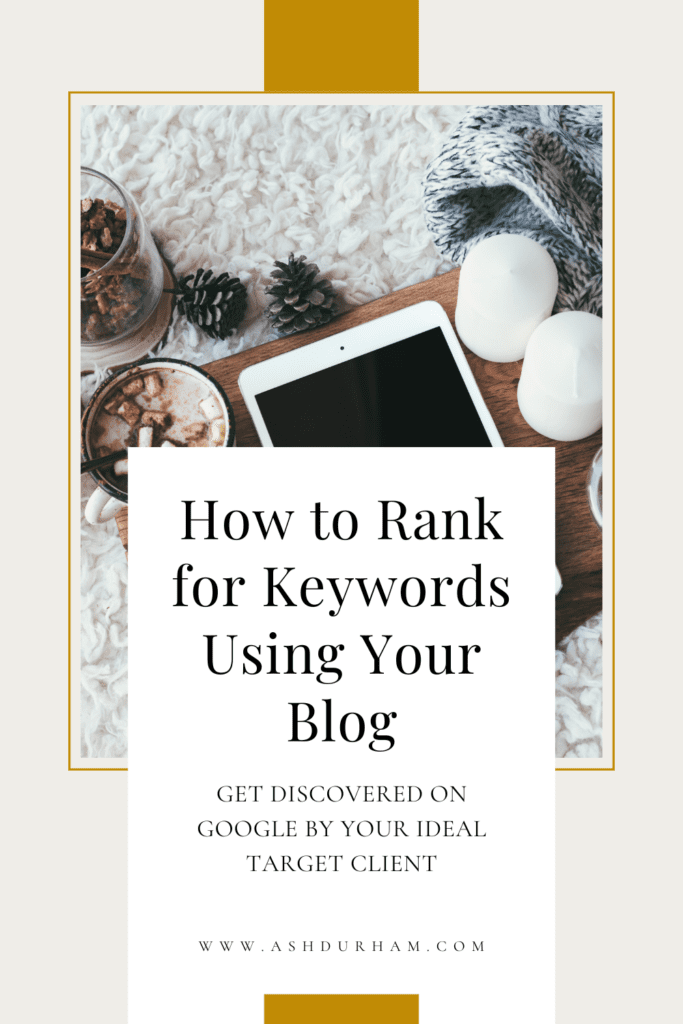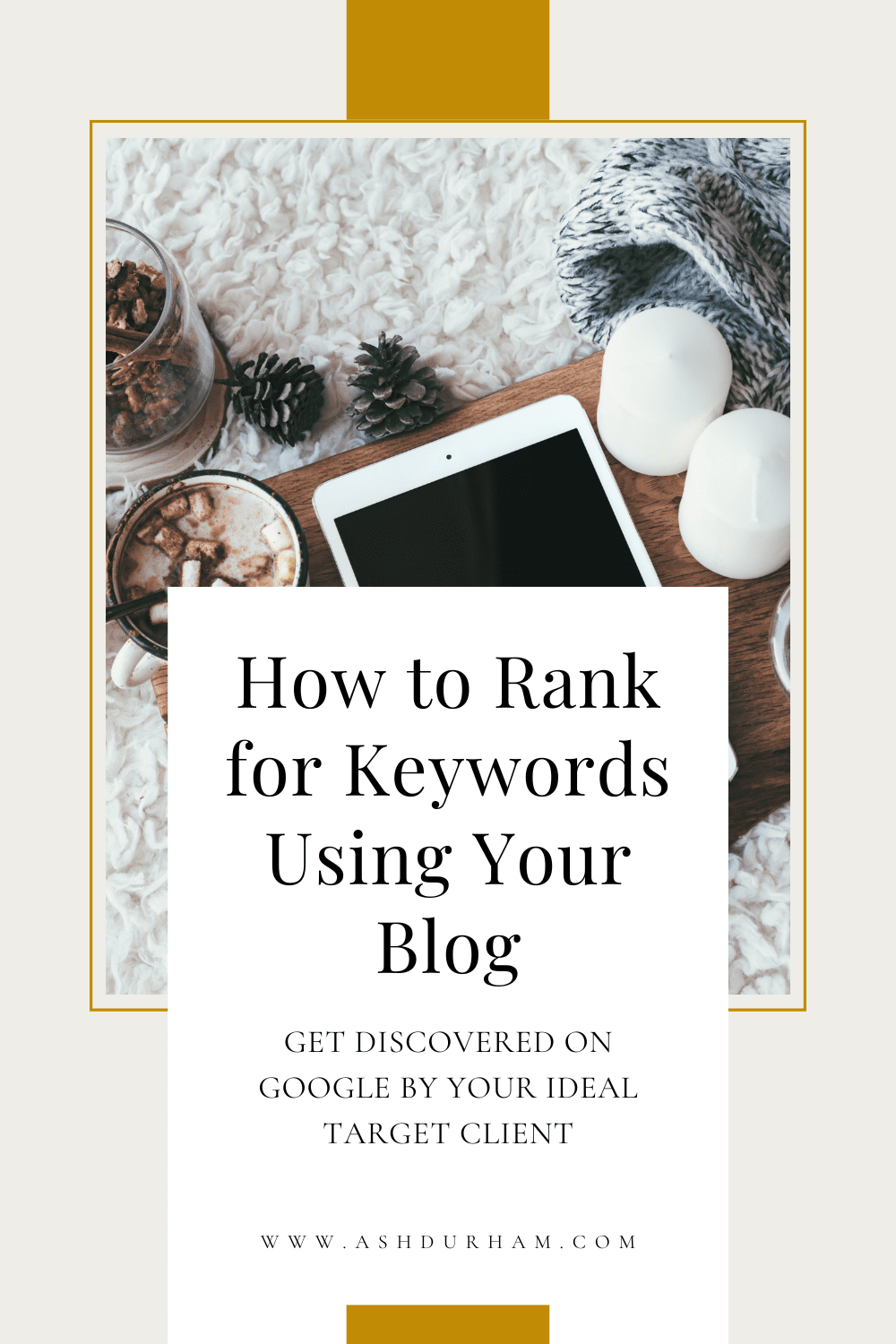
Last week, I explained about using keywords in your blog title and how important that is. This week, we are going to take that training a step further and discuss how to rank for keywords in your blog itself!
Imagine this: your dream client goes to Google and does a search for a photographer in your area and your website pops up on the first page of results.
Whoa. Can you imagine how much more traffic to your website that means? And if your site is easy to navigate and visually enticing, how many more inquiries you’ll get? And then with that, how much more income you can provide for yourself and your family?
Yeah, whoa. 😳
Let’s think about this from a psychological point of view: people are inherently looking for the path of least resistance. Not only that, in the modern age of instant gratification, many times people will go with the easiest and fastest option.
Guess what? This can happen for you – you just have to put in what I refer to as “the wrench time.” That means: put in the hard work, and the payoff will happen.
Put in the Hard Work and the Payoff Will Happen
Look, I am all about making your business easier and less stressful to manage. Some people are able to get 100% of their marketing from social media, word of mouth and direct referrals. And you know what? That’s awesome. I love that for them.
But if you’re new to your location, or you are breaking into a new photography niche or maybe you want to shift to a new clientele base? You might not have the benefit of an engaged social media following full of targeted client possibilities, or the relationships with vendors who will sing your praises quite yet. And that’s okay! We ALL start somewhere.
LEARN MORE: Beginners Guide to Blogging
This sounds really hard, I know; however: what if I told you a secret? You can absolutely populate in Google searches (and therefore build client base and positive, referring network) simply by blogging!
So let’s dive into the training!
How to Rank for Keywords Using Your Blog
Each blog should have at least one overall keyword or key phrase that you’re working toward. It should be absolutely specific to whatever the blog is about, and targeted to your future audience. As we talked about last week, the keyword should also be in your blog title.
So what do I mean by all of this? I’ll provide you an example:
Let’s say you’re a family photographer in Surprise, Arizona (hi, that’s me 👋). And you’re blogging a family session that you recently photographed in the nearby White Tank Mountains.
How would I title my blog? “Family Photos at White Tank Mountains”
This would also be my keyword phrase that I want to populate for when searching for “family photos at White Tank Mountains.”
Then, whenever it was naturally available to include the keyword phrase in the blog, I would incorporate that into the paragraph text of the blog.
- “I loved capturing Client’s family photos at White Tank Mountains this fall…”
- “Their family photos at White Tank Mountains had the most incredible desert backdrop…”
- “I am so grateful to be able to take family photos at White Tank Mountains, because it is such a picturesque place to take my clients…”
Depending on the text length of your blog (which really shouldn’t be less than 300 words), you’ll want to include your keyword at least twice. Make sure you’re using the Yoast plugin on your WordPress blog to get those green lights! It’ll really help you rank for keywords using your blog.
Want to take your blog keywording to the next level?
I would also recommend including an additional keyword for your overall website on each blog you write. Why? Because we want Google and other search engines to recognize you’re a valuable asset that needs to populate in searches!
So remember how I mentioned you were a Surprise family photographer (hi again 👋 still me!)? Your website is likely geared to target someone looking for someone to help them with that. But you don’t want to write “Surprise Family Photographer” in every blog title, right?
No, you don’t. Because that’s annoying. 😂
Instead, include variations of explaining what you do and who you serve in your blog posts.
Examples?
- “As a family photographer in the west valley of Phoenix….”
- “I love serving the families of Surprise as their favorite photographer…”
- “The White Tank Mountains just west of Surprise is my favorite place to take family photos…”
See how these examples utilize alternate ways to use the keyword phrase for both your website as well as the specific blog you’re writing?
Another option?
At the bottom of each of my session or wedding blogs, I include a brief synopsis of who I am and who I serve. I also include a clickable link to contact me, because if they love what they see, I want to make it as stupid easy as possible for them to reach out to me to book me as their family photographer.
But what if I do when I have multiple sessions at the same location?
Excellent question! When you’re well-established in the area and begin to gain traction, you don’t want to have a “Family Photos at White Tank Mountains 1,” “…2,” “…3.”
Instead, you’ll want to use variations of the key phrase you want rank for on search engines. You can include variations to describe the session, such as time of day (ie morning, sunset, blue hour), weather, season or month of the year ( ie cloudy, summer, September), style/niche ( ie lifestyle, mini session, glamorous). The options are only as endless as your imagination (or the limitations of ChatGPT 😂).
Examples?
- “Summer Family Session at White Tank Mountains”
- “White Tank Mountains Family Photography in Winter”
- “Phoenix West Valley Family Photos at White Tank Mountains”
Warnings About Overstuffing Your Blog With Keywords
I would be remiss if I didn’t warn you about overstuffing keywords into your blog. 😬 You don’t want to overuse them! Why? Because when you overdo it, Google might think your site is kinda spammy and we definitely don’t want that.

Ashley Durham is a longtime creative business owner devoted to helping small businesses thrive with as little stress as possible. Follow along on Instagram for behind the scenes, tips, education and my latest work.
To learn more about what Ashley has shared, check out the Photographer’s Resource Guide.
